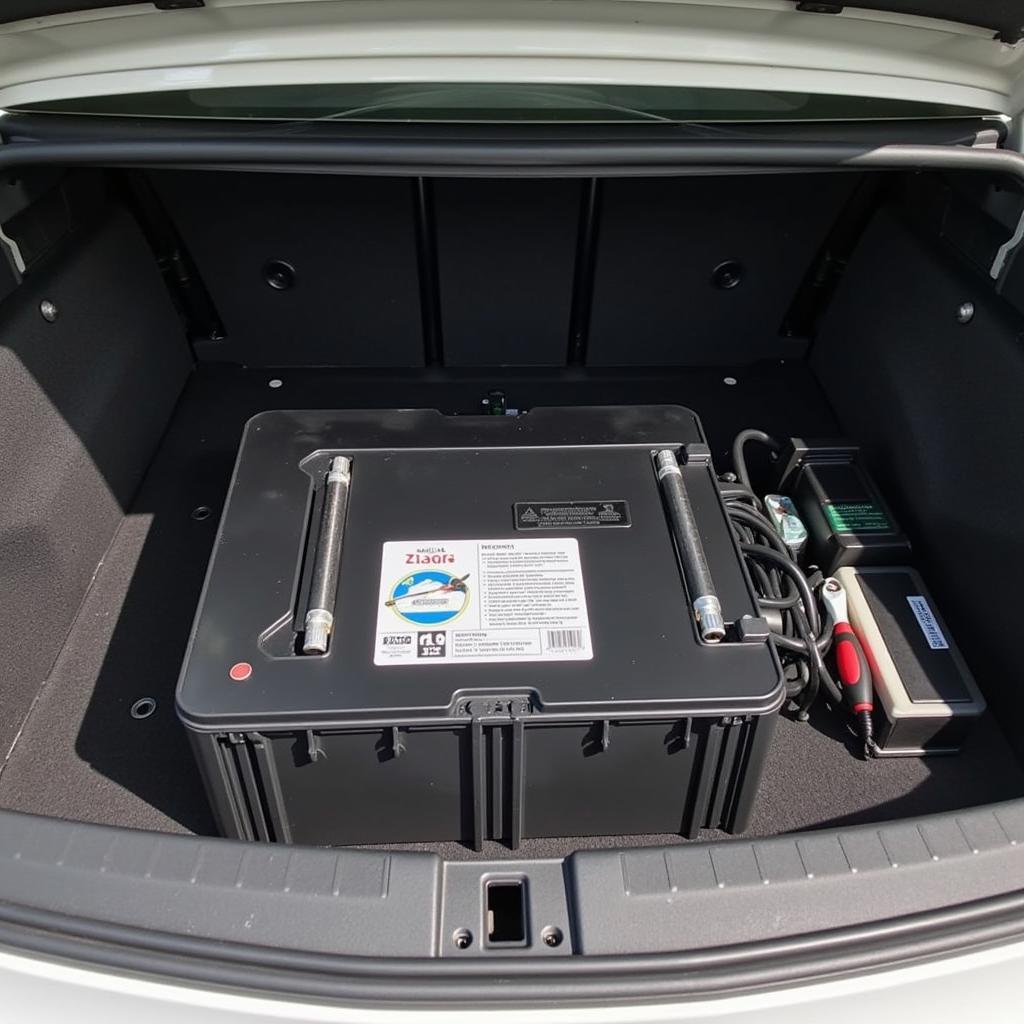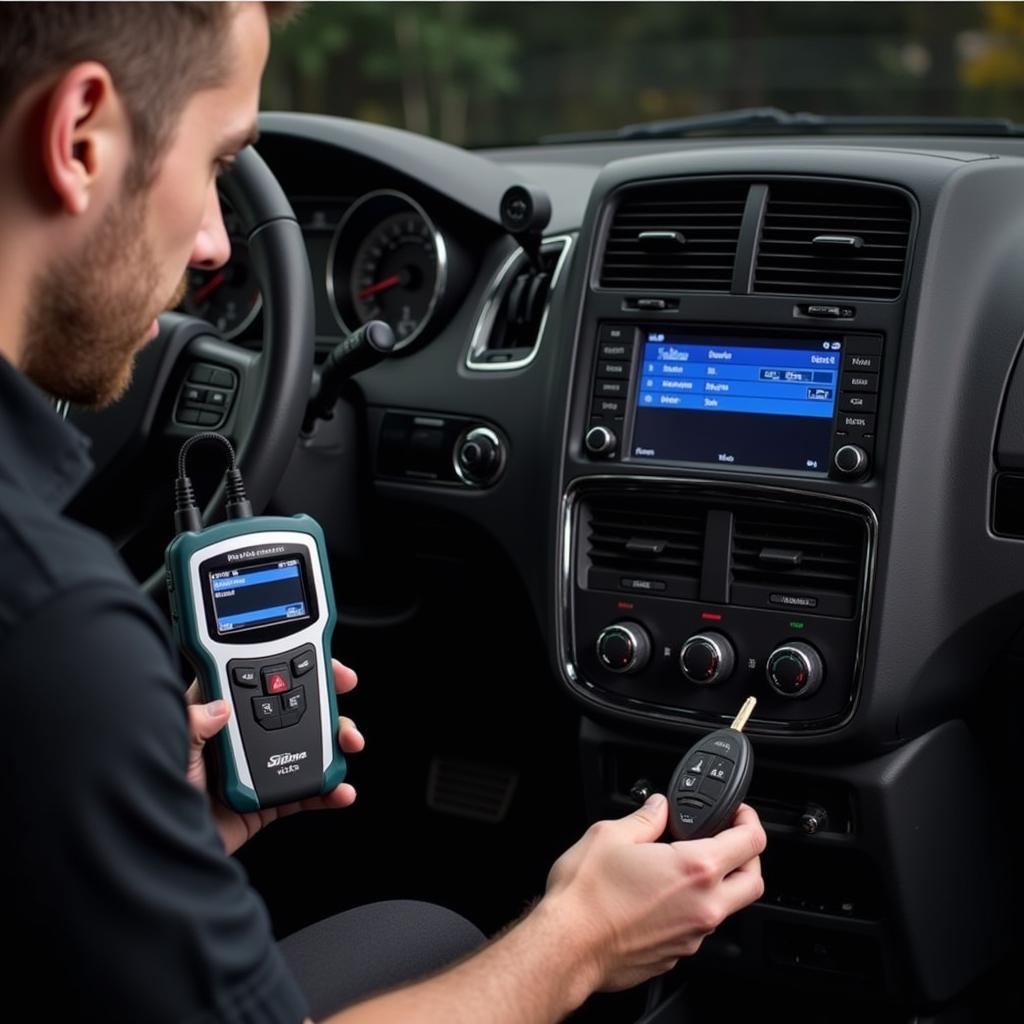The dreaded “Low Voltage Battery Warning” on your Tesla Model 3 can be a real headache. This article dives into the causes, solutions, and preventative measures for dealing with this issue, offering expert advice and practical guidance. tesla model 3 low voltage battery warning Let’s get to the bottom of this and get your Model 3 back on the road.
Understanding the Tesla Model 3’s 12V System
Unlike the high-voltage battery that powers the car’s motor, the 12V battery in a Tesla Model 3 operates many of the conventional car functions, such as lights, infotainment, and power locks. It’s also crucial for starting the car, as it powers the contactors that connect the high-voltage battery. A malfunctioning 12V battery can lead to a range of problems, including the infamous “Low Voltage Battery Warning.”
Common Causes of the Low Voltage Battery Warning
- Age and Degradation: Like any car battery, the 12V battery in a Tesla Model 3 has a limited lifespan. Over time, its capacity to hold a charge diminishes, eventually leading to the low voltage warning.
- Parasitic Drain: This occurs when electrical components continue to draw power even when the car is off. This can be due to faulty equipment, software glitches, or even leaving accessories plugged in.
- Extreme Temperatures: Both extreme heat and cold can stress the 12V battery, reducing its performance and lifespan.
- Software Issues: Occasionally, software bugs can contribute to excessive battery drain, triggering the warning.
- Faulty DC-DC Converter: This component converts the high-voltage power to 12V to charge the auxiliary battery. A faulty converter can prevent the 12V battery from charging properly.
 Tesla Model 3 12V Battery Location
Tesla Model 3 12V Battery Location
Diagnosing the Problem
Identifying the root cause of the low voltage battery warning requires a systematic approach.
- Check for Obvious Issues: Ensure no lights or accessories are left on. Disconnect any aftermarket devices that might be drawing power.
- Monitor Battery Voltage: Using a multimeter, check the voltage of the 12V battery. A healthy battery should read around 12.6V when the car is off.
- Check for Error Codes: Access the car’s service menu to see if any error codes related to the 12V system are present.
Troubleshooting Tips for Tesla Model 3 Low Voltage Battery Issues
- Try a Jump Start: If the voltage is significantly low, try jump-starting the car. engine warning light after jump start This can provide a temporary solution and allow you to drive to a service center.
- Check the DC-DC Converter: If jump-starting doesn’t resolve the issue, the DC-DC converter might be faulty. This requires professional diagnosis and repair.
- Update Software: Ensure your Tesla Model 3 is running the latest software version, as software updates often address battery management issues.
Preventing Future Low Voltage Battery Warnings
- Regularly Drive Your Car: Driving the car frequently allows the high-voltage battery to charge the 12V battery, preventing it from discharging completely.
- Minimize Accessory Use While Parked: Avoid leaving accessories like the sentry mode or climate control on for extended periods when the car is parked.
- Park in Moderate Temperatures: When possible, park your Tesla Model 3 in a garage or shaded area to protect the 12V battery from extreme temperatures.
“Maintaining the 12V system is crucial for the overall health of your Tesla Model 3,” says John Smith, a leading automotive electrical engineer. “Regular checks and proactive maintenance can prevent many common issues.”
tesla car seat seat belt warning
Long-Term Solutions
- 12V Battery Replacement: If the 12V battery is nearing the end of its life, replacement is the most effective solution.
- Remote Diagnostics and Software Updates: Tesla offers remote diagnostics and software updates that can address some 12V battery issues without a physical visit to a service center.
In conclusion, the “tesla low voltage battery warning model 3” can be a symptom of various underlying issues, ranging from a simple parasitic drain to a faulty DC-DC converter. By understanding the potential causes and applying the troubleshooting tips outlined in this article, you can effectively address this warning and ensure the reliable operation of your Tesla Model 3. car battery overheat Remember, preventative maintenance is key to avoiding future problems.
FAQ
- How long does a Tesla Model 3 12V battery last? Typically, a Tesla Model 3 12V battery lasts between 3-4 years.
- Can I replace the 12V battery myself? Yes, but it requires some technical knowledge and the right tools.
- What happens if the 12V battery dies completely? The car will not start, and you may need a jump start or a new battery.
- How much does a Tesla Model 3 12V battery replacement cost? The cost varies depending on the service provider but typically ranges from $150-$300.
- Does Tesla offer mobile service for 12V battery replacement? Yes, in some areas, Tesla offers mobile service for 12V battery replacement.
- Can a low 12V battery affect the range of my Tesla Model 3? No, the 12V battery does not directly impact the car’s driving range.
- How can I prevent my Tesla Model 3 12V battery from dying? Regularly driving the car, minimizing accessory use while parked, and parking in moderate temperatures can help prevent the 12V battery from dying.


